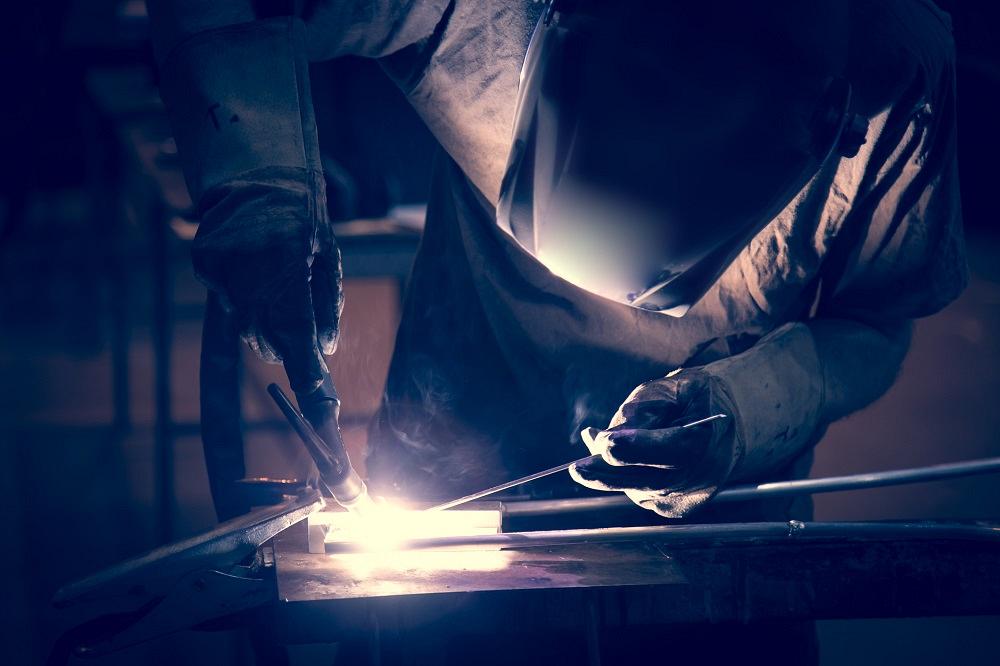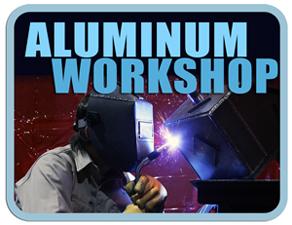President
- FMA
- The Fabricator
- FABTECH
- Canadian Metalworking
Categories
- Additive Manufacturing
- Aluminum Welding
- Arc Welding
- Assembly and Joining
- Automation and Robotics
- Bending and Forming
- Consumables
- Cutting and Weld Prep
- Electric Vehicles
- En Español
- Finishing
- Hydroforming
- Laser Cutting
- Laser Welding
- Machining
- Manufacturing Software
- Materials Handling
- Metals/Materials
- Oxyfuel Cutting
- Plasma Cutting
- Power Tools
- Punching and Other Holemaking
- Roll Forming
- Safety
- Sawing
- Shearing
- Shop Management
- Testing and Measuring
- Tube and Pipe Fabrication
- Tube and Pipe Production
- Waterjet Cutting
Industry Directory
Webcasts
Podcasts
FAB 40
Advertise
Subscribe
Account Login
Search
Aluminum Workshop: Setting up your AC power supply for aluminum GTAW
- By Frank Armao
- November 20, 2019
- Article
- Aluminum Welding

It's important to understand the difference between high-frequency intensity and the balance controls, and how to adjust them when AC welding aluminum. Getty Images
Q: Can you explain the function of the high-frequency (HF) intensity and the balance controls on my power supply and how to adjust them when AC welding aluminum?
A: First, it’s important to realize that these are two independent controls – they are not related. The HF starting current doesn’t provide any cathodic cleaning of the material surface. The electrode positive (EP) part of the AC (i.e., the balance control) does that. The purpose of the HF is to provide a high-voltage, low-current signal (usually 5 to 10 MHz) to break through the naturally occurring aluminum oxide surface and allow the arc to initiate.
However, it is equally important in stabilizing the arc when using most AC power supplies on aluminum. We use AC for gas tungsten arc welding (GTAW) of aluminum because the electrode negative (EN) part of the AC puts about 70 percent of its energy into the work, providing good penetration. However, we also need the EP part, which puts about 70 percent of the arc’s energy back into the electrode and torch to provide cathodic cleaning of the weld. Many years ago people realized that AC was, in most cases, the best option for welding aluminum. Yes, you can weld aluminum in DCEN, but this is a subject for another column.
If you think about it, the voltage in an AC arc goes through a “0” value twice each arc cycle. Without continuous HF, the arc would tend to extinguish itself at these points, which is why it is often used in AC welding. It is particularly important when using an older welding power supply that produces AC with a sine wave shape. In this sort of power supply, the voltage goes through “0” relatively slowly, so the arc needs more stabilization.
Many manufacturers claim that the newer SCR/transformer power supplies that produce a square-AC output do not need continuous HF to produce a stable AC for aluminum GTAW. Don’t believe them; they do. While these new machines are much more stable than the older sine-wave machines, the voltage still goes through “0” twice per AC cycle, albeit much more quickly. Since they can still be unstable in AC welding, make sure to use continuous HF.
Almost all manufacturers claim that the newer inverter AC GTAW power supplies do not need continuous HF. They are correct, although HF is still used for starting. Why isn’t continuous HF needed? Inverters don’t produce a true AC. There are two separate inverters inside the case, one set at positive polarity and one set at negative polarity. It produces a quasi-AC by turning one on and the other off simultaneously. The result looks and acts like true AC, but it isn’t. However, since there is no “0” voltage crossover during the cycle, continuous HF isn’t necessary. By the way, this is why inverter GTAW power supplies are more expensive than SCR power supplies.
Back to your original question. Adjust HF intensity to the minimum value that will produce acceptable arc starting and arc stability. Adjusting it to higher values can produce two problems. First, it will erode the tungsten electrode and cause it to deteriorate. Second, it will actually etch the HAZ area. This can cause problems with subsequent inspection, especially liquid penetrant inspection.
Now let’s talk about the balance control. You might think that setting it at 50 percent is optimal. It isn’t. That’s because many years ago it was determined that we didn’t really need 50 percent EP (which gives us cathodic cleaning) to give acceptable welds. Instead, even for older power supplies, something like 35 percent EP gives us good arc cleaning and improves penetration. In fact, for more modern inverter power supplies, balances as low as 15 percent give good arc cleaning and excellent penetration.
The message is clear. Set the balance control as low as possible while maintaining good arc cleaning.
About the Author

Frank Armao
Aluminum Consulting Inc.
440-479-0239
About the Publication
subscribe now

The Welder, formerly known as Practical Welding Today, is a showcase of the real people who make the products we use and work with every day. This magazine has served the welding community in North America well for more than 20 years.
start your free subscription- Stay connected from anywhere

Easily access valuable industry resources now with full access to the digital edition of The Fabricator.

Easily access valuable industry resources now with full access to the digital edition of The Welder.

Easily access valuable industry resources now with full access to the digital edition of The Tube and Pipe Journal.
- Podcasting
- Podcast:
- The Fabricator Podcast
- Published:
- 04/16/2024
- Running Time:
- 63:29
In this episode of The Fabricator Podcast, Caleb Chamberlain, co-founder and CEO of OSH Cut, discusses his company’s...
- Trending Articles
Sheffield Forgemasters makes global leap in welding technology

ESAB unveils Texas facility renovation

Engine-driven welding machines include integrated air compressors

How welders can stay safe during grinding

The impact of sine and square waves in aluminum AC welding, Part I

- Industry Events
16th Annual Safety Conference
- April 30 - May 1, 2024
- Elgin,
Pipe and Tube Conference
- May 21 - 22, 2024
- Omaha, NE
World-Class Roll Forming Workshop
- June 5 - 6, 2024
- Louisville, KY
Advanced Laser Application Workshop
- June 25 - 27, 2024
- Novi, MI



























